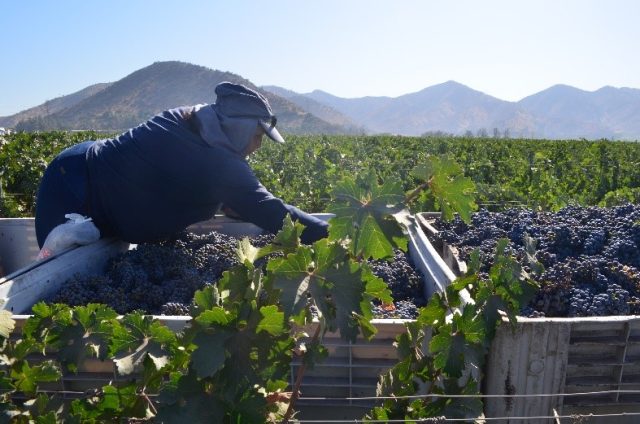This website uses cookies so that we can provide you with the best user experience possible. Cookie information is stored in your browser and performs functions such as recognising you when you return to our website and helping our team to understand which sections of the website you find most interesting and useful.
Viña Santa Rita wraps harvest after warmest vintage for 70 years
The Chilean wine producer has seen a historically warm year, with the highest temperatures in nearly a century giving rise to unprecedented grape maturity.

Santa Rita Estates has revealed that 2023 is the earliest it has ever started harvest in its vineyards, due to near-record high temperatures in Chile.
“Summer 2023 saw the thermometer soar to over 34°C with successive heat waves from mid-January to the end of March,” said Gerardo Leal, viticulture manager of Santa Rita Estates.
“For this reason the start of the harvest was brought forward to the first week of February and finished in record time in mid-April.”
Leal revealed that the winery’s white grapes were harvested “mainly until mid-March, with very good results in terms of yields and quality, while the reds finished the process during the first week of April, with a lower production than estimated but slightly higher than the previous season.”
He noted that Santa Rita Estates will not be alone in its historically early harvest.
“The effects of high temperatures are affecting the entire country,” Leal said. “The situation requires maximum effort from the whole team, particularly those in production in both the winery and in the vineyards. Everyone must communicate, coordinate and work as team, thinking both about the quality of the grapes and wines, as well as avoiding yield losses”.
At Santa Rita Estates, the harvest usually takes around three months to complete, depending on the weather conditions of the surrounding valleys. Which grapes are harvested when, and exactly how to vinify each lot is decided on a daily basis.
At Viña Doña Paula, the company’s winery in Argentina, the vintage has been impacted by “highly polarized weather”, which reduced the number of grapes harvested, but promises excellent white wines and good fruit ripeness in the reds, says Martin Kaiser, director of enology and viticulture.
Summer was marked by high temperatures sustained for months, before a polar front in October 2022 brought frosts, with significant damage to leaves and grapes.
“The worst hit was Chardonnay, a very early budding variety,” said Kaiser. “Its yields fell by up to 50%, even in vineyards that did not show visible damage due to the cold. However, the quality of the whites promises to be superior thanks to the marked absence of rain during the entire ripening period”.
The 2023 harvest will be remembered in Argentina as the lowest volume harvest in more than half a century, yet the silver lining is that Doña Paula has achieved above average volume ensuring an uncompromised supply of wines of outstanding quality.
Related news
Arnault eyes recovery as LVMH weathers 2024 challenges
Hallgarten on duty: 'a material impact across our entire portfolio'

